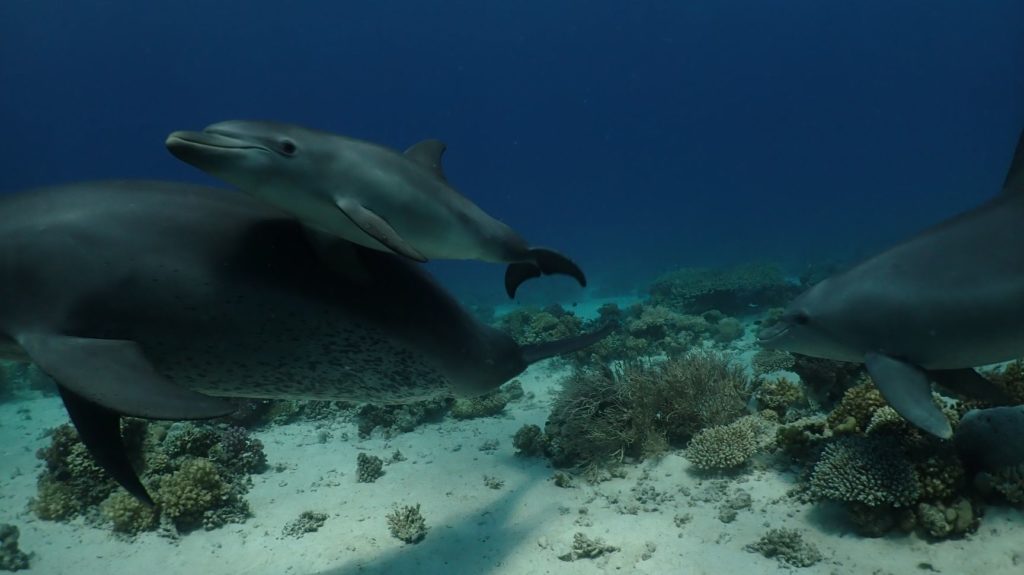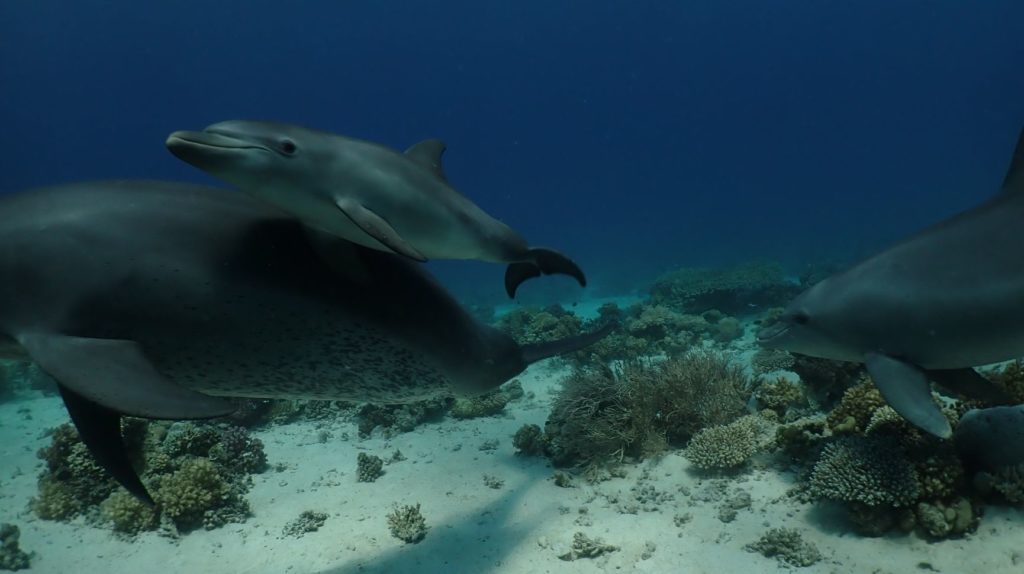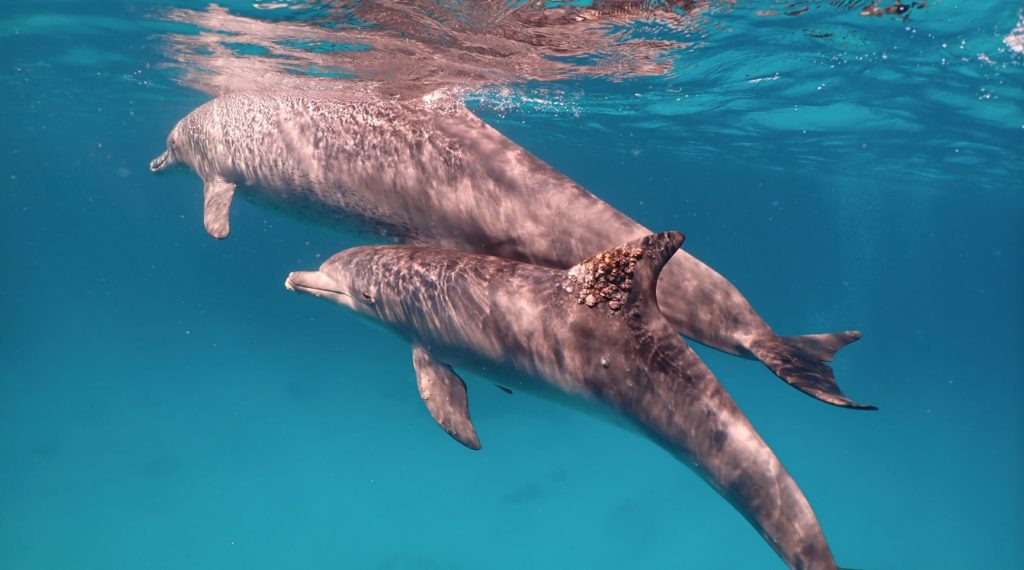The video taken at Coral “clinics” shows stunning images of dolphins lining up to self-medicate with invertebrates.
If a person gets a rash, they may go to the doctor and be given some ointment to apply to it. Skin diseases affect Indo-Pacific bottlenose dolphins as well, but they get their treatment by lining up nose-to-tail to rub against reefs.
Researchers demonstrate in the May 19 issue of iScience that these corals have medicinal properties, suggesting that dolphins use these marine invertebrates to treat skin ailments.

Angela Ziltener (@DWAORG), a wildlife biologist at the University of Zurich in Switzerland, first noticed dolphins rubbing against coral in the Northern Red Sea, off the coast of Egypt, thirteen years ago. She and her colleagues noted that the dolphins were picky about which corals they rubbed against, and they were curious as to why.
“I hadn’t seen this coral rubbing behavior described before, and it was clear that the dolphins knew exactly which coral they wanted to use,” explains Ziltener. “I thought, ‘There must be a reason.’”

Most dolphin research is done from the surface of the water, but Ziltener was able to examine the dolphins up close because she is a diver. It took some time for her to gain the trust of the dolphins, which she was able to do in part because the dolphins were unfazed by the big bubbles created by the diving tanks and had become accustomed to divers.
“Some dolphins, like spinner dolphins in the Southern Egyptian Red Sea, are shyer regarding bubbles,” she adds.
Once the pod permitted her to visit them frequently, she and her colleagues were able to identify and analyze the corals that the dolphins were rubbing against. Indo-Pacific bottlenose dolphins were stirring the microscopic polyps that make up the coral ecosystem, according to Ziltener and her team, and these invertebrates were leaking mucus as a result of their constant rubbing against the corals. The scientists took coral samples in order to figure out what features the mucus carried.

The researchers used planar separations, on-surface assays, and high-resolution mass spectrometry to analyze samples of the gorgonian coral Rumphella aggregata, the leather coral Sarcophyton sp., and the sponge Ircinia sp. and discovered 17 active metabolites with antibacterial, antioxidative, hormonal, and toxic activities.
The identification of these bioactive substances prompted the researchers to think that coral and sponge mucus is used to maintain the microbiota of the dolphin skin and treat illnesses.
“Repeated rubbing allows the active metabolites to come into contact with the skin of the dolphins,” adds Morlock. “These metabolites could help them achieve skin homeostasis and be useful for prophylaxis or auxiliary treatment against microbial infections.”
The reefs where these corals can be found are critical habitats for local dolphins. They go there to relax and have a good time.
“Many people don’t realize that these coral reefs are bedrooms for the dolphins, and playgrounds as well,” adds Ziltener.
The dolphins frequently wake up between naps to perform the coral rubbing habit.
“It’s almost like they are showering, cleaning themselves before they go to sleep or get up for the day,” she adds.
Ziltener has noticed a troubling trend since she began studying dolphins in Egypt in 2009.
“The tourism industry makes a lot of money now out of dolphin swimming. People are dreaming of swimming with the dolphins, so they are figuring out which reefs they use and disturbing the dolphins if they don’t follow the guidelines for how to approach them in a responsible way,” she says.
She is so concerned that she founded the Dolphin Watch Alliance, a conservation organization that trains tour guides, tourists, and the general public on how to provide dolphin-friendly tourism experiences and has pushed for the reefs to be designated as protected areas.
Ziltener and her colleagues hope to continue studying coral rubbing and identifying which corals and sponges are utilized for various body parts as long as the reefs provide a secure haven for the dolphins.
Image Credit: Angela Ziltener
You were reading: Watch Amazing Dolphins Self-medicating Skin Ailments at Coral “Clinics”